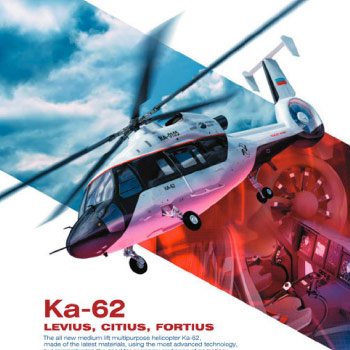Month: January 2013
Aerospace Advertising: How to Grab Attention
 No matter the stated goals of an ad, to be effective it must accomplish three things — capture the viewer’s attention, communicate the desired facts or attitudes, and cause the viewer to feel how what they’ve learned is important and desirable and how a future with the advertised product or service or position will be a better future for them.
No matter the stated goals of an ad, to be effective it must accomplish three things — capture the viewer’s attention, communicate the desired facts or attitudes, and cause the viewer to feel how what they’ve learned is important and desirable and how a future with the advertised product or service or position will be a better future for them.
See, understand, feel.
If the ad does not grab attention, if it is skipped over, ignored, or even actively avoided, there will be no step two.
How can you grab attention? Graphics are often the tool of choice — a photo or illustration that draws the eye, colors that stand out (bold, subtle, different, non-existent), a composition that causes a pause. But a sufficiently bold (in design or sentiment) headline can perform the same function.
Once grabbed, the viewer’s attention must be rewarded. There should be an appropriate connection between what caused the pause and the next level of engagement. While there is often descriptive or narrative copy, it is not a requirement and might even be a crutch, supporting an otherwise pointless or uninteresting message. An image might communicate all that is required. Or text might be unaccompanied by other graphics. Or somewhere in between.
Remember, the point of all the effort to write, design, and otherwise produce this bit of commercial art must be a change in perception. Such changes are greatest when the ad supports the brand image that is developed across all media and touch points, and leads to the viewer believing that their future will be better with the product or service communicated in the ad. It’s as simple as that.
Simple to state, perhaps, but not simple to execute.
Perhaps the first step is easily judged — does the ad stop the viewer long enough to allow for step two? This requires evaluating the ad not just in itself, but also in context. How does the ad fit with, or stand out from, the editorial, graphics, layout, and other advertising that surround it and otherwise comprise its milieu? Other parts of the magazine? Other ads in that market space? The general graphic sensibility of the times?
And if it stops the viewer, does the ad impart important information? Does it communicate why this product/service/action is superior to others on offer or, perhaps even better, why the offer has no competition and is desirable in and of itself?
But most importantly, does the information transform a viewer’s vision of their future? Does it make the viewer feel? That is the ultimate and singularly relevant question.
So, whether you are creating or judging an ad, be honest with yourself — does it make the viewer see, understand, and feel? If it does, it is working.
If it doesn’t, it’s a waste of money.
Critiquing An Aerospace Advertisement: Russian Helicopters Ka-62
 I thought I’d take a look at an ad from a relative newcomer to the western markets, in particular an ad for the Ka-62 helicopter from Russian Helicopters.
I thought I’d take a look at an ad from a relative newcomer to the western markets, in particular an ad for the Ka-62 helicopter from Russian Helicopters.
In Monday’s, I talk about how an ad must perform three tasks, in succession, to be effective: cause the reader to see, understand, and feel.
To see the ad means to stop long enough, in flipping pages or pixels, to take an interest in what might be represented.
The Ka-62 ad does that for me. It is populated with elements that are arranged to clearly indicate the nature of the ad — it’s about a helicopter. A dynamic view of a helicopter, a bold and clear headline (simply the name of the product), and obviously enough copy to suggest I may learn something, but not so much that I’m afraid to venture into reading it. I’m intrigued and willing to take the next step: spend a few moments deciding if I can learn something of value.
Could the graphics and copy have led to an ad about training, or support, or ITAR issues, or insurance? No. The background image of the flight deck, and the tail rotor, and some other murky effect or graphic, all blended together, is not entirely clear in what is being offered, but the aircraft on top, pointing to the headline, prevents confusion.
What is a little confusing is the subhead: levius, citius, fortius. I assumed it to be Latin, and figured it was interesting, but with a poor comprehension of the language, I felt a bit ignorant. That feeling could have been ameliorated if the body copy provided the translation but it didn’t and so, right where you, ad creator, want to be creating understanding, you have placed a stumbling block. (By the way, it translates to smoother, faster, stronger; reasonable but pretty much wasted by presenting it in a dead language.)
The body copy is otherwise fine. Nothing fancy, and a little vague in its claims, but sufficient to add to my understanding of the product and leaving me with enough questions to be interested in learning more. Maybe not now, by calling or emailing or even typing in the URL, but on my radar to be alert for other ads, stories, press releases, etc.
So, did my seeing and understanding lead to a change in my feelings? Yes.
I knew almost nothing about the product, and now I’m primed to learn more as the opportunities present themselves. I feel better about the company, too, because the graphics and the writing were appropriate to the marketplace and rewarded me for the time I spent. If more ads from Russian Helicopters support this style and approach, I will be open to spending time with those ads. And if other media from them support the same brand image, it will strengthen their brand in my mind. And even if I determine this product is not for me, other offers from them will be viewed with an accepting eye.
Mission(s) accomplished.
7 Steps to Campaign Success in the Aerospace Market

- Goals. What are you trying to achieve with this campaign? Who are you targeting?
- Research. Talk to your customers. What are their pressures, concerns, needs and drivers? What marketing tactics work with them? The aerospace industry is very different than other markets so it’s important to find out what works for your specific audience.
- Personas. Use your research to create a representative “persona” of each group you are targeting. This helps to visualize that person.
- Content. Map out your content based on what your persona research has outlined for you. Address your customer’s problems.
- Tactics. Your research told you where your customers engage and the best way to influence them. Plan out your tactics based on this and use your story map to tie it all together.
- Measurement. Make sure you’ve included a tracking mechanism on all tactics to measure success. If this isn’t tracked, then how do you know if your methods worked?
- Reassess. If you didn’t get the success you were hoping for, change a headline, try a different tactic, check your customer list contact info . . . keep adjusting until it works.



